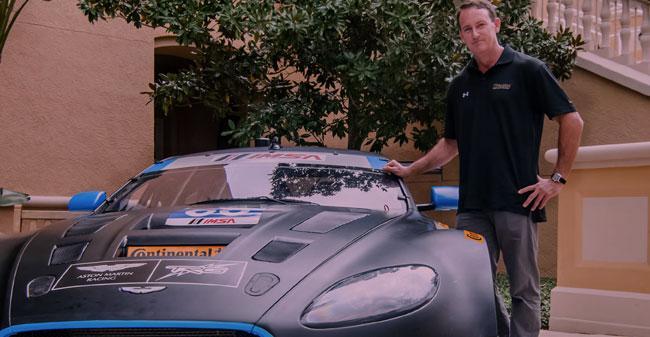Car collecting is a popular hobby among auto enthusiasts and wealthy investors alike. Not only is it a way to showcase a passion for vintage and classic cars as well as the sport of car racing, but it can also serve as a potentially profitable alternative investment.
One of the main draws of car collecting is the potential for an increase in asset valuation. Cars, particularly vintage and classic models, can increase in value as they become rarer and more sought after. This is particularly true for cars with unique histories or limited production runs. In recent years, there have been several examples of high-profile auctions where rare cars have sold for millions of dollars, such as the Ferrari 335 Sport Scaglietti that sold for more than $35 million in 2016.
And while car collecting initially brings exotic machines, wealthy patrons and high sticker prices to mind, interestingly, the average car enthusiast — of which there are about 70 million in the U.S. — has invested $35,000 in that passion. While there is definitely a luxury aspect to the marketplace — as with other collectibles, such as art, wine and sports memorabilia, among so many others — most can pursue their interests at a level appropriate for them.
I recently had the great pleasure of speaking with Jack Butcher, the recently retired former president of Hagerty, who was responsible for maximizing stakeholder value and growing the company’s global insurance business. During our conversation, we covered a range of topics — from asset valuation and insurance, which is the core of Hagerty’s business, to the future of car collecting and the next generation of enthusiasts who will drive it (pun intended). In this first article from that conversation, Jack and I focus on the next generation.
From the perspective of my profession — I founded a multifamily office serving high-net-worth people — the next generation is often viewed as the children of wealth creators. Within this context, the parents are pursuing their destiny and considering various aspects of legacy. That includes the transfer of their family values; personal interests, such as collecting; and wealth to their children and future generations. I was intrigued by Jack’s perspective and Hagerty’s strategic focus on cultivating the future drivers, enthusiasts and collectors of cars.
“We have taught over 4,000 young drivers how to drive manual transmissions, for example, and we do that because we see these young people turning up at events, turning up at tracks with their families, Jack told me. “We believe this is a market built by a community of like-minded, passionate enthusiasts.” Whether family or community, there are shared values that unite people, and there is great desire to see those values carried forward purposefully.
While Jack’s focus is obviously on cars, my focus — a personal passion since my youth — has been sports memorabilia. As Jack and I spoke, what emerged is that while the category of collection may differ — from cars to wine to art to sports memorabilia — the constant is the passion: the history and intrinsic value of “the thing” that was often so much more than its assessed value.
Yet across so many collectors and their collections, there is a lack of valuation, resulting in a collector not having a clear appreciation for the monetary worth of something that is so important to them, as well as a lack of thought into how to pass it on to future generations.
In an interview I did with Wade Boggs, the Baseball Hall of Famer recognized the importance of estate planning and related considerations, such as insurance, which all require an assessment of value. And while there was recognition of a need to get this done, my sense was that it would remain on a to-do list for some time.
In my article Deconstructing A Collection: Preparing Your Family to Handle Your Investment Down the Road, I discuss what both a collector and investor should consider to appropriately protect their collection, investment and transfer of wealth to family members, a foundation or other possible beneficiaries.
Understandably, with Hagerty, the valuation of cars is foundational to its business of insuring them. “You know, some people are extremely practical, and it is a purely economic trade,” Jack said. “Many people treat collectible cars as they would any other tradable asset. Yes, they purchase it with the intent of the value going up and selling it at a profit. But there are others who simply purchase a car to augment an existing collection.”
And regardless of whether you are acquiring the car as an investor or a collector, or perhaps as both, having accurate data on which to place a valuation is essential to insuring that item.
“They’re missing the one that they’ve always wanted, and it would complete their collection, want a fill-in-the-blank car because it was raced at Le Mans or raced at Indy or belongs to a certain individual,” Jack said of these collectors. “Many will purchase to gain privileged access to different organizations and clubs. There’s a lovely tour in Europe called Mille Miglia, an exclusive tour, and it’s limited to only those vehicles that were produced no later than 1957, so people will purchase vehicles to be eligible to be invited to that. And so the list goes on.
“I would say people will often collect for nostalgia, where they want a car because it was the one their grandfather or grandmother owned, or they remember riding in it as a young child, or they restored it with a parent. That’s powerful.”
There are any number of ways that Jack and I have seen collectors think about the future relative to their collections. For example, gifting vehicles to the next generation (Each state handles this differently, so speak with your adviser or accountant). Jack has seen parents co-title certain vehicles with their children or gift vehicles to museums, all with the intent of facilitating tax advantages.
Estate planning is where the valuation of any collection plays a particularly important role. Conversations with the next generation about the significance of the collection — personally to the collector as well as monetarily — should take place so that key stakeholders have an appropriate understanding of and appreciation for the collection as a whole.
Said Jack: “Make sure that everyone involved knows, before someone’s passing, how they might direct the estate to work with certain auction houses to ensure that — if there is no next generation to pass the collection on to or the next generation does not share the collector’s interests and passions and wants to sell the collection — the value of that collection is harvested at the proper level.” Jack and I have both seen numerous situations where this was not properly managed, leaving the collection and next generation vulnerable.
What are his top three recommendations for a next-generation collector?
“I think it is really important that a collector understand their own ‘Why?’ ” Jack said. “While there is no right or wrong answer here, they do need to be clear on it when they’re going to acquire that car.”
The second recommendation: “Be sure to get a fair price, making certain you understand the value of the asset prior to acquiring it.”
And Jack’s third recommendation: “Once you own it, make sure you protect and maintain it — as much for your own benefit as for the future.”




